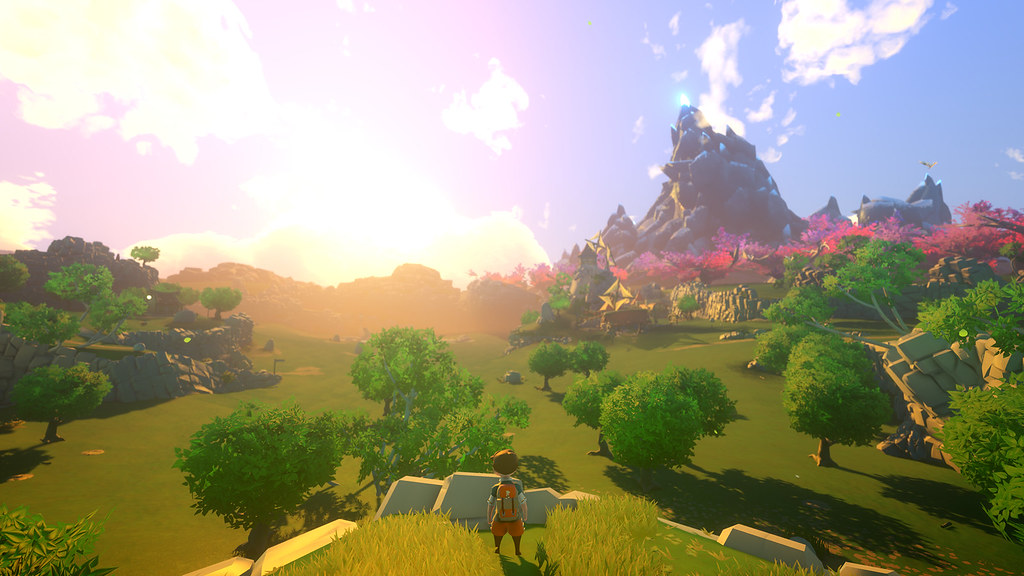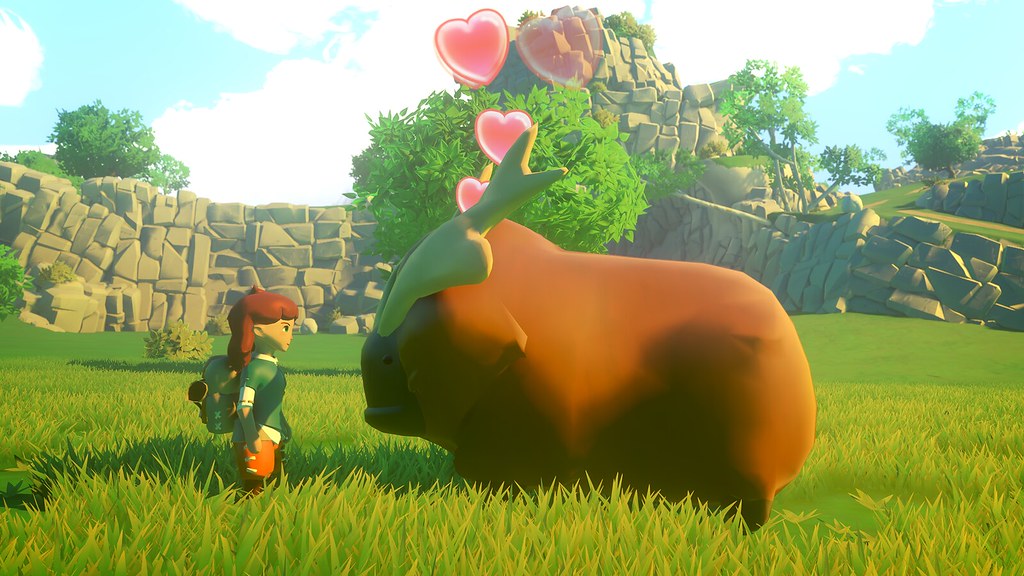(Review written by Scott Dirk.)
Yonder is an open world exploration game that really delivers on its premise. You begin your journey on a ship your parents have sent you away on in an attempt to keep you safe from danger. After talking to the crew, a storm rolls in and the ship is quickly struck by lightning. A Sprite then intercedes and makes a deal with you to help you if you help the spirit find its children. These Sprites help you to combat the Murk that is littered across the land in which you are now stranded.
The game has a relaxed atmosphere of letting you explore your surroundings with childlike wonder without fear of monsters or traps. The game has a lot to explore, from huge plains, forests, and towns for trading and quests. Once you obtain tools, you’ll be able to collect various resources which you can use for crafting. The main mission is to restore the land from the infection of the Murk, but you do so at your own pace. The game gives you a lot of side quests to do as well as having farms and ranching.

The graphics in the game are very lush, but are not too demanding. The landscape is very enjoyable to look at while traveling between locations, and you can get lost in simply exploring what is around you. The world music is relaxed, but cycles between varied motifs, so it’s not just one tune set repetitively. There is also a day-night cycle which seems to have little effect other than the wild animals sleeping; the NPCs seem to be night owls.
The mechanic I enjoyed most was fishing, where you cast your line and use WASD keys to move the bobber. Once a fish bites, you then pull in the opposite direction of the fish. There is an arrow to help you with the direction, which made me feel like I was pulling in the fish. The fishing mechanic does seem better suited to a controller with thumb sticks but combing WASD keys worked well; you can also customize the key bind commands.

This is one of those expansive games that may take players a while to complete depending on how they pace themselves during gameplay. I think it’s worth the time to explore Yonder in this world.
Yonder is available on PC and PlayStation 4.
